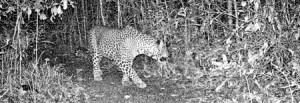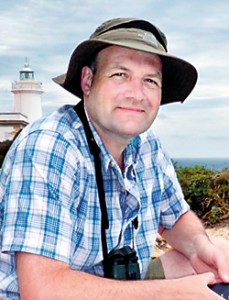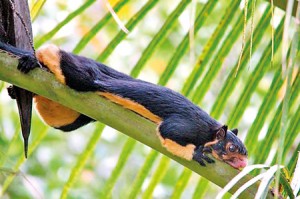Guess who was spotted in Sinharaja one dark night?
View(s):The Sinharaja Forest Reserve located in the southwest of Sri Lanka, is the country’s last viable primary tropical rainforest. It is a biodiversity hotspot and due to its international significance has been designated a Biosphere Reserve and World Heritage Site by UNESCO.
More than 60% of the trees are endemic and many of them are considered rare. There is much endemic wildlife, especially birds, but the reserve is also home to over 50% of Sri Lanka’s endemic species of mammals and butterflies, as well as many kinds of insects, reptiles and amphibians most of which are very rare and endangered.
Old Sinhala legends claim that the forest was royal territory belonging to ancient kings and in some early colonial records, the rainforest is referred to as the “Rajasinghe Forest.” Also the name Sinharaja means the “Lion King” implying that these forests steeped in myths and legends used to be inhabited by lions.
A Primary School Head Teacher from Gloucester, England, Richard Humphrey was not pursuing mythical and legendary lions when on August 19, he set his remote camera trap on a path leading to the forest.
Having an avid interest in wildlife, birds and photography, Richard whenever he could would set up his remote camera to capture the nocturnal wildlife.
This is his account of capturing with his remote camera one of the most elusive and secretive mammals that inhabits the impenetrable rain forests of Sinharaja.
In fact there are those that believe that the very existence of this animal in the Sinharaja is as mythical as that of the legendary lion.
My wife and I spent almost three weeks touring the south west of Sri Lanka.
We spent time in Waikkal, a forest area above Kandy, the tea country near Nuwara Eliya, Uda Walawe and, finally, at the Rainforest Ecolodge, Sinharaja.
We had thoroughly enjoyed our holiday at a relaxed pace spending time exploring rural locations and national parks observing the birds and wildlife. We also took the opportunity to meet locals and understand the Sri Lankan way of life and taste the delicious food.
At each destination I had set a camera trap in the hotel grounds and got photographs of a range of animals including Porcupine, Ring-tailed Civet, Golden Civet, Palm Civet and Mouse Deer.
Our final stay was at the Rainforest Ecolodge – a truly fabulous lodge with exceptional bird and wildlife watching opportunities as well as the chance to learn about rainforest ecosystems.
I had managed to see and photograph many endemic species including regular sightings of the wonderful Blue Magpie and Purple-faced Leaf Monkey. All this whilst staying in real comfort and being served fantastic Sri Lankan food.
Each night I set the camera trap and was successful in taking photographs of a Porcupine and Ring-tailed Civet on the path that takes visitors from their rooms to the start of the track into the rainforest.
I had joked with my wife, security guard (Sujeewa Nishantha) and the manager that the next photograph would be of a Leopard – we had all laughed about it!
I had been told that, although there was some evidence of Leopards in the area, sightings are incredibly rare and that there is only a very small population of Leopard in Sinharaja, let alone around the lodge.Even the security guards who spend all night on watch had never seen one.
On the evening of August 19, I decided to set the camera trap well away from the accommodation some 50 metres along the same path as on previous nights but then also approximately 30 metres down the track into the rainforest.
I presumed this would give me a greater chance of getting photographs of animals. Since the forest was so dense, I thought that at some stage animals would use the track in order to travel to and from their foraging and hunting grounds.
It was getting dark so I was accompanied by Sujeewa. I strapped the camera onto the thin trunk of a small tree about 60 cm above the ground facing down the track further into the forest.
The next morning at 6 a.m. I collected the camera hoping that it had taken photographs of more small, rainforest creatures. I was truly amazed and lost for words when one by one pictures of a large adult Leopard began to download onto my ipad.
The twelve pictures showed it appearing from the darkness, slowly walking up the path towards the camera before stopping to look into the trees. It continued to approach the position of the camera and at one point stared into the lens before wandering away into the night.
This took place at 2 a.m. What amazing good luck and fortune!
It caused quite a commotion in the lodge when I showed the photographs to the excited and awestruck manager and guides.
Other staff arrived to see them as the word spread that now there was absolute proof of leopards currently living in the immediate area. Sujeewa grinned from ear to ear and was particularly pleased that our efforts had been rewarded in spectacular fashion.
This was a fabulous end to our memorable stay in Sri Lanka. We were very appreciative of the courteous and helpful staff in all our hotels and the very friendly and happy local people. The wildlife and birdwatching were amazing and we cannot wait to return.


